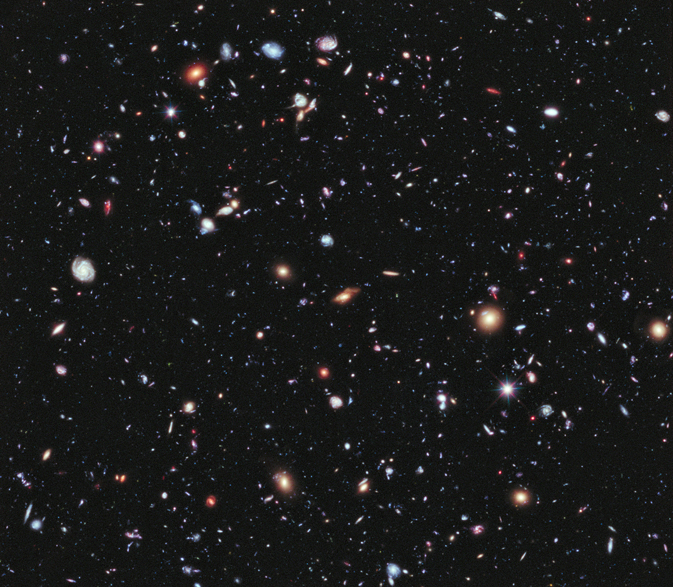 The universe is the complete region of space in which things exist. The best-known theory to date is that the universe commenced with a 'hot Big Bang' of energy and matter and that it continues to expand.
The universe is the complete region of space in which things exist. The best-known theory to date is that the universe commenced with a 'hot Big Bang' of energy and matter and that it continues to expand.
This image shows the Hubble telescope 'deep field'. The blotches of light might look like stars observed by the eye in the night sky, but in fact are entire galaxies. The redder the galaxy, the older and further away it is from Earth.
Key Concepts
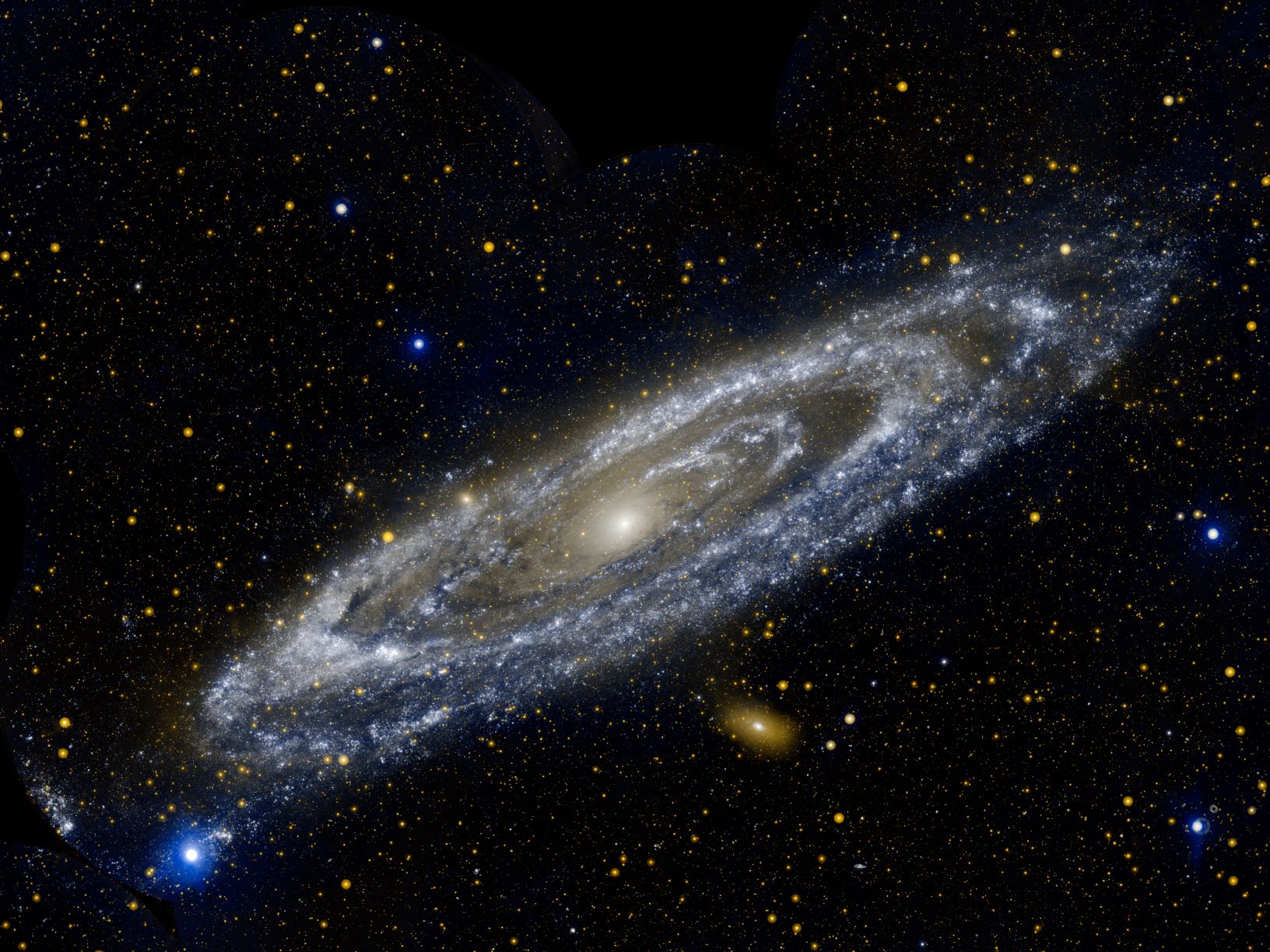 Galaxy
Galaxy
A galaxy is a collection of hundreds of billions of stars. They orbit a black hole at the centre of the galaxy. A black hole is defined as having such a strong gravitational field that the escape velocity for a ballistic object exceeds the speed of light.
We are located in the Milky Way galaxy. This image shows the Andromeda galaxy, the closest neighbour to our own.
Hundreds or thousands of galaxies can group together under gravity to form clusters. These clusters may then group to form superclusters. As an example, the Milky Way is a galaxy in the Local Group galaxy cluster, which in turn is part of the Laniakea Supercluster.
 Planetary system
Planetary system
A planetary system consists of a star with bodies orbitting it, such as planets and comets. Both planets and comets have elliptical orbits but planets' orbits are nearly circular, whereas comets' are highly eccentric. Planets can be made of rock (like Earth) or gas (like Jupiter). Objects too small to be called planets are referred to as dwarf planets (you might recall Pluto's demotion) or asteroids. Comets are made from ice and dust.
Bodies that orbit planets are called satellites. Most of those orbitting Earth are man-made satellites, but we have one natural satellite too - the Moon.
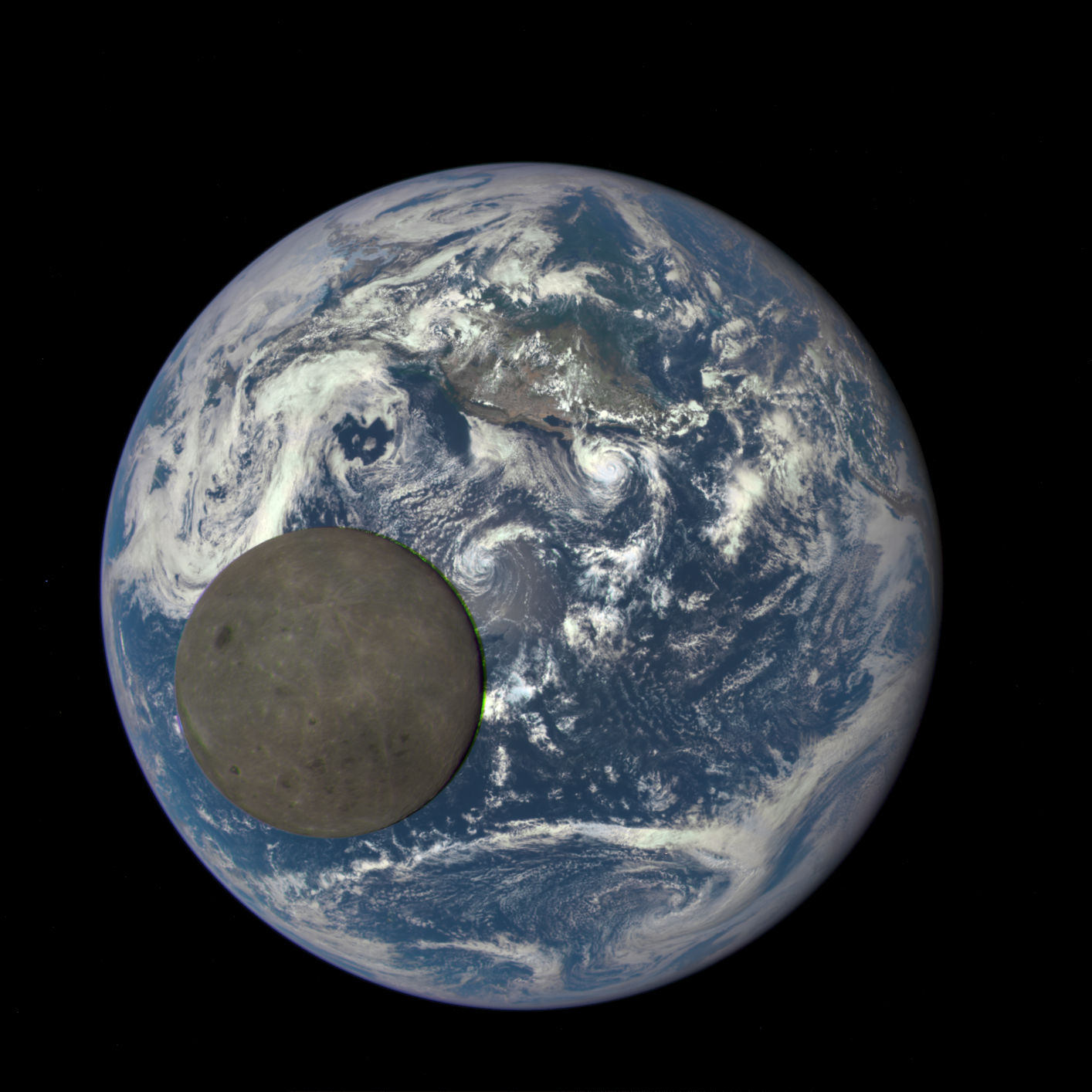 Often depicted as a squashed up safari of big, bright spheres, our Solar System is rarely shown to scale. The correct relative sizes are too extreme to be shown here, but check out this tediously accurate model.
Often depicted as a squashed up safari of big, bright spheres, our Solar System is rarely shown to scale. The correct relative sizes are too extreme to be shown here, but check out this tediously accurate model.
In order, our planets go outward from the sun as follows to make up the Solar System:
- Mercury
- Venus
- Earth
- Mars
- (Asteroid belt)
- Jupiter
- Saturn
- Uranus
- Neptune
- (Kuiper belt, including Pluto)
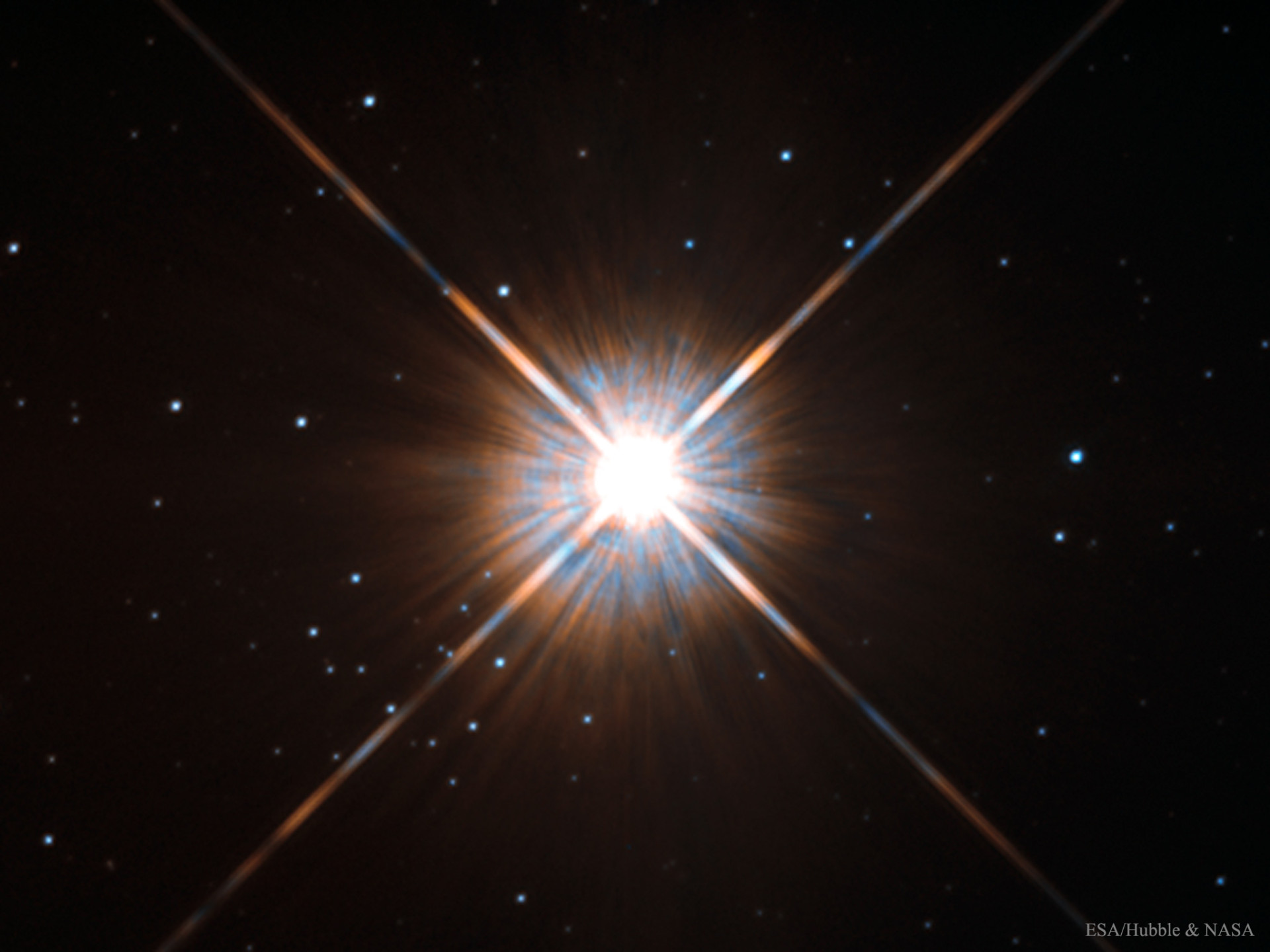 Stars
Stars
A star is a body of extremely large mass and high temperature, with nuclear fusion taking place at the core. A star is formed from a nebula, a cloud of dust and gas that collapses under its own gravity.
Stars experience a lifecycle, from birth as a protostar to the main sequence to the giant phase. The death of a large star is an explosive supernova with two further possible outcomes, whereas small stars form dwarfs.
A star exists longest in the main sequence, in which the inward force of gravity is balanced by the outward radiation pressure.
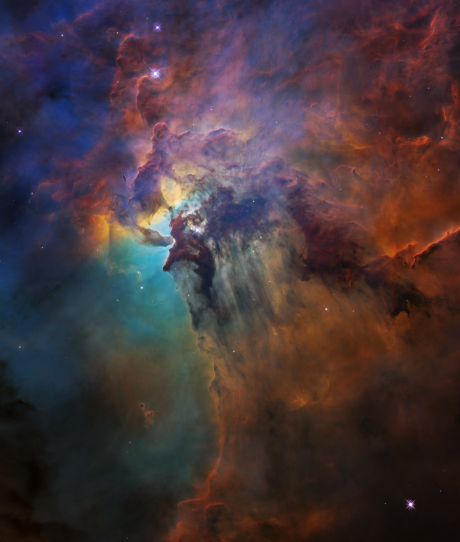 There are a few key terms to be aware of:
There are a few key terms to be aware of:
- Two stars in mutual orbit are referred to as binary. Star Wars fans might recall that Tatooine is a planet orbitting a binary star planetary system.
- Stars with constant relative positions in the night sky have been gazed and marvelled at by mankind for millenia. These are known as constellations and still inspire myth and astrological fortune telling across the world today.
- Stars can group together to form stellar clusters. Globular clusters contain tens of thousands of old stars with tight gravitational attraction and are found in the halo of a galaxy. Open clusters contain hundreds or thousands of stars with weaker gravitational attraction. Found in the disk of galaxies, open clusters have active star formation taking place.
How much of Objects in the universe have you understood?



 Twitter
Twitter  Facebook
Facebook  LinkedIn
LinkedIn